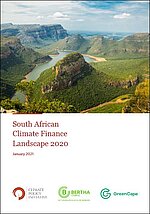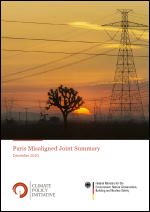Global power sector investments misaligned with Paris

Climate Policy Initiative (CPI) tracks and assesses new investments in the energy sector with alignment with Paris Agreement goals and identifies apparent misalignment.
Five years ago, in article 2.1c of the Paris Agreement, world leaders pledged to make “finance flows consistent with a pathway towards low greenhouse emissions,” meaning finance should catalyse climate action and enable a decarbonization pathway compatible with the Paris Agreement mitigation objective to keep global warming to well below 2°C.
However, the direct effects of finance on climate are difficult to quantify. Not all financial transactions have direct or substantial real-world repercussions, and some are challenging to track, especially investments in high-emissions assets. As a result, methodologies to measure the climate impact of financial flows lack comprehensiveness and granularity. Investors’ climate policies are often limited to exclusion lists, climate risk assessments, or taxonomy-based approaches, many of which fail to fully capture the impacts of greenhouse emissions.
Tracking Global Power Sector Investment
Climate Policy Initiative (CPI) proposes a method to define “consistent” finance flows and assess whether finance is on track for or aligned with the Paris Agreement targets. It accomplishes this by moving from an assessment of high-carbon investment in the power sector to a new method of assessing the Paris alignment of asset-level financial transactions before synthesizing both topics in an analysis of the global power sector’s progress toward Paris goals.
In a series of three papers, CPI provides first-of-its-kind insight on the alignment of new power sector investment with Paris Agreement mitigation goals. To assess the impact of finance, this work explores methods and available data for tracking high greenhouse gas (GHG) emissions finance at the project level. It further outlines a new scenario-based methodology for evaluating the compatibility of new investment with IEA emission budgets, and presents the results from applying this methodology to best available data for the global power and U.S. transport sectors for the year 2018.
Paris Agreement misaligned
Early findings from this analysis show that while renewable energy investment continues to grow, the world is on a trajectory of more than double the 1.5°C target in the Paris Agreement, owing to a combination of continued new fossil-fuel investment and the existing stock locked-in, dirty fossil generation. CPI’s assessment also reveals that no major country or region is currently decarbonizing its power sector at the required pace to meet Paris goals.
To meet Paris-aligned targets in 2030 and stay within implied carbon intensity budgets across regions, all new finance for power should fund development of zero-carbon generation and decommissioning of fossil fuel plants should take place at an accelerated pace.
The link has been copied to the clipboard
Contact
IKI Office
Zukunft – Umwelt – Gesellschaft (ZUG) gGmbH
Stresemannstraße 69-71
10963 Berlin
Related Publications
-

-
 03/ 2021 | Guideline
03/ 2021 | GuidelineGuidelines for Building a National Landscape of Climate Finance
English (external link)






